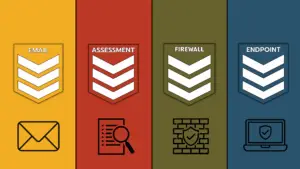 After taking all the time to prepare the graphics, write the script, and rehearse your PowerPoint presentation, the last thing you want to have happen is a minor oversight that will turn your effort into consternation. You can significantly minimize your chances of having to interrupt the proceedings by incorporating these five pointers into your presentation review process.
After taking all the time to prepare the graphics, write the script, and rehearse your PowerPoint presentation, the last thing you want to have happen is a minor oversight that will turn your effort into consternation. You can significantly minimize your chances of having to interrupt the proceedings by incorporating these five pointers into your presentation review process.
1) Remember a presentation is not a movie or video clip.
The essence of a PowerPoint presentation is to convey information quickly and memorably to the viewer’s mind. Use too many animations, transitions, and even slides in the presentation and they will be just more information the viewer will have to mentally process. Ask yourself whether they are more likely to remember the important information or the clever way you used to present it.
2) Practice and organize your presentation using a “creative narrative.”
Many people advise structuring your presentation with a logical sequence. What is often missed is what part of that sequence do you want to emphasize the most. Most readers of text will remember the first or last sentences of a paragraph, but forget much of what is in between. You can structure your presentation to fit your personal presentation style. Ask yourself where the emphasis should be and spend more time practicing that part of the sequence.
3) Be mindful of the equipment.
While you can control your preparation and its content, hardware can play havoc with the best preparations. An executive secretary needs 45 minutes to set up an average, no frills, weekly in-house conference meeting.
Store a copy of your presentation on an external device, such as a thumbdrive
Check your computer’s basic functionality
If you are using a projector, check its basic operation prior to the presentation
If you are using a remote control or laser pointer, be sure the batteries are charged
Performing a basic check of the obvious electrical systems will narrow the source of any potential problem.
4) Prepare yourself to command the attention of the audience.
There are a lot of basic errors made in presentations: too many slides, too many animations and graphics, and mismatched colors and fonts. These errors make your presentation less effective; remember, people came to see you, not the PowerPoint. The slide show is an extension of the subject you are presenting, not the other way around. Ask yourself if you are ready to put the PowerPoint in its proper place.
5) Get the audience involved.
This is an advanced technique but if properly used, it can smooth over many rough spots quickly. For example, you forget a key point and you need to move backwards. You can ask the audience a question that will redirect the presentation to the point you missed. Then smoothly move on from there. If the audience is passively engaged in the presentation, opportunities to make a misstep are significantly reduced, and a rough spot can turn out to be a major bump. Ask yourself if you are ready and willing to engage the audience.
Some of these tips are simple, while others require preparation and experience. If you are an experienced PowerPoint presenter you may already be familiar with some of these ideas. Whatever your level of knowledge and experience, covering the basics is always a good idea. Preparation is the key, because presuming everything will go smoothly is probably one of the most likely ways to guarantee that your presentation will be more of an adventure than a journey!




